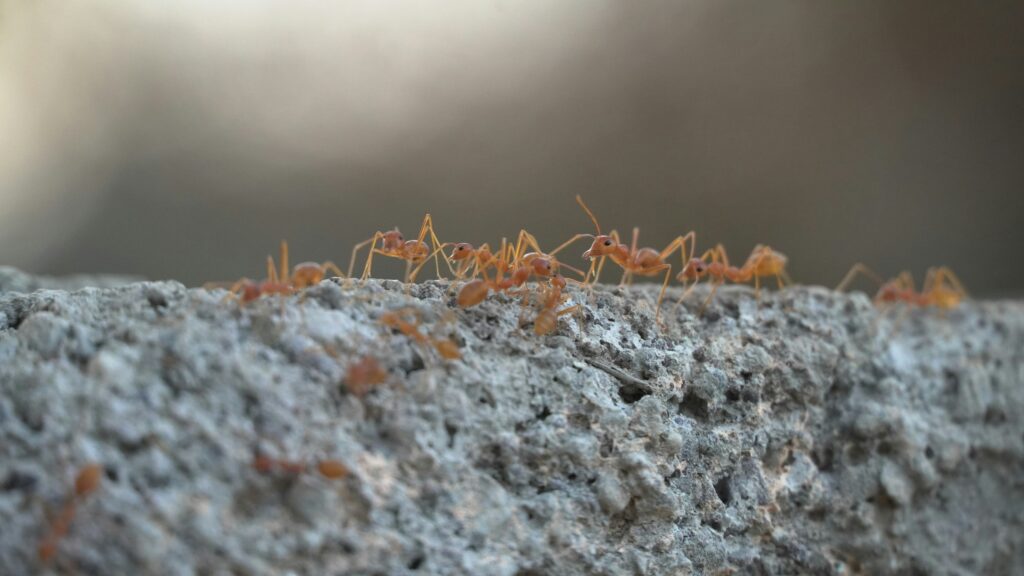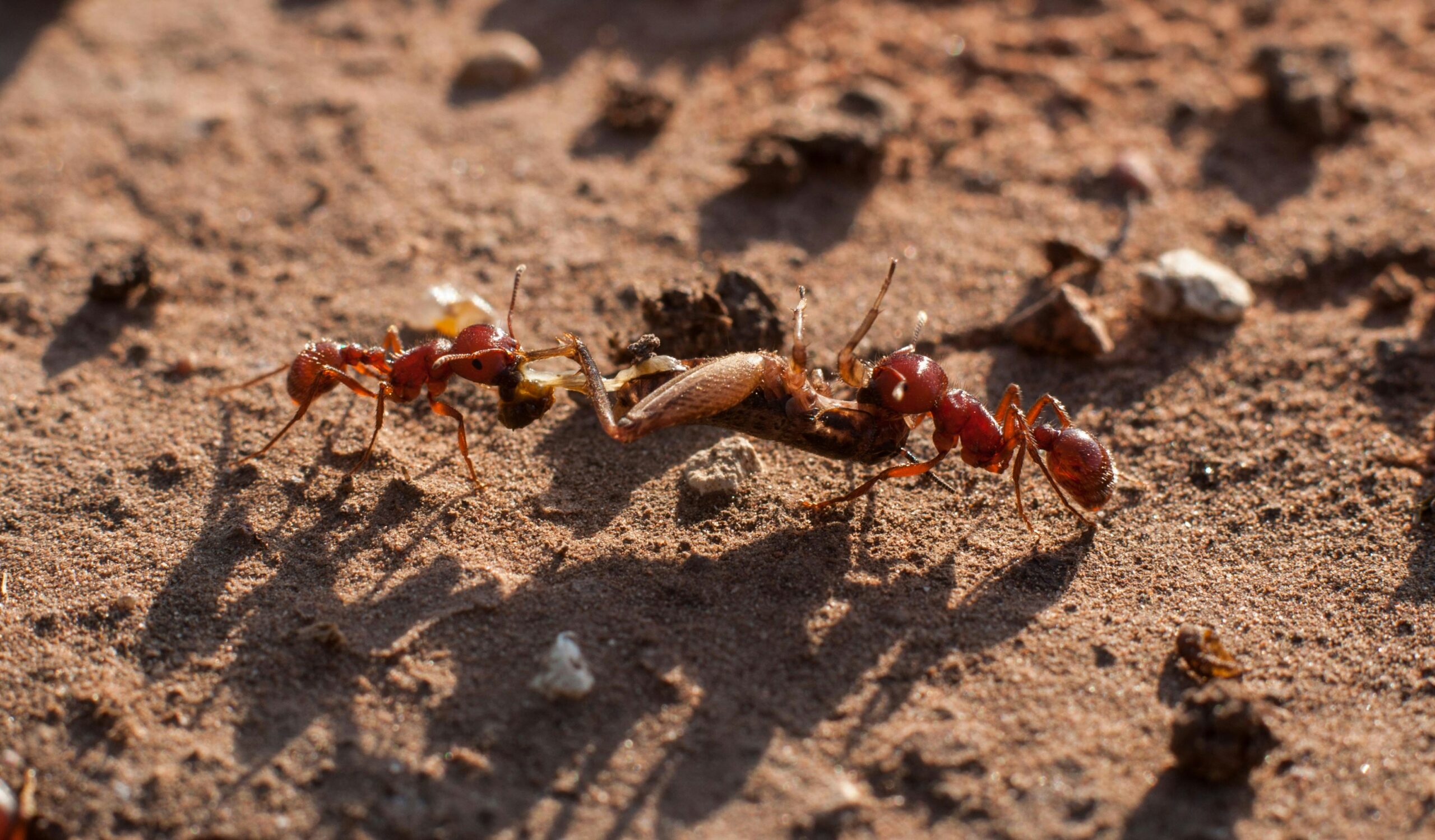Unlock the secrets of Safari Ants! Discover 7 key facts about these nomadic insects.
In the heart of Africa’s ecosystems, one of the most formidable and brilliantly organized forces is not a large mammal, but an insect: the Safari Ant (genus Dorylus). Also known as driver ants or siafu, these nomadic insects represent a pinnacle of social organization and collective behavior. This comprehensive guide delves into the ecology and behavior of Safari Ants, uncovering the secrets of their life cycle, their relentless movement, and the sophisticated communication that makes their existence possible.
The Masters of Collective Action
Safari Ants are a testament to the power of numbers and coordination. Their existence is a constant cycle of migration and predation, governed by self-organization and stigmergy—a process where individuals coordinate actions indirectly through modifications to their environment (Jean-Baptiste & Claire, 2017). Unlike the stationary, leaf-weaving Oecophylla weaver ants, Safari Ants are nomads, a lifestyle that demands unparalleled efficiency in communication and movement to coordinate millions of individuals across diverse terrains (Teseo & Delloro, 2017). This analysis explores the intricate mechanisms behind their success.
Biology and Classification of Safari Ants
Belonging to the genus Dorylus, Safari Ants are army ants found throughout central and east Africa. They are characterized by their blind, nomadic workers and the presence of massive colonies that can contain over 20 million individuals.
The Incredible Life Cycle of Safari Ants
The life cycle of Safari Ants is central to their nomadic existence.
- Egg Stage: A single, enormous queen, often called an “egg-laying machine,” can produce up to 1-2 million eggs per month. These eggs are meticulously cared for by worker ants.
- Larval Stage: The hatched larvae are the engine of the colony. Their nutritional demands are the primary driver for the colony’s relentless foraging raids. Workers feed them through trophallaxis (regurgitation).
- Pupal Stage: Larvae spin a cocoon and pupate, transforming into adult ants. The colony must protect these vulnerable pupae during its nomadic phases.
- Adult Stage: Adults emerge as different castes: sterile female workers (small minors to large majors or “soldiers”) and seasonal reproductive males and females.
A Life of Movement and Raiding
The behavior of Safari Ants is a breathtaking display of collective intelligence.
Brutal Foraging Strategies
Safari Ants do not send out individual scouts like Megaponera analis, which specializes in hunting termites (Modiba et al., 2024). Instead, they employ a mass foraging strategy. They form massive raiding columns that can be over 50 meters wide and 100,000 individuals strong. This “swarm raid” overwhelms all invertebrates and even small vertebrates in their path, flushing them from leaf litter and soil.

Predation and Defense Mechanisms
Their defense is their offense. The largest workers, or soldiers, possess powerful, scissor-like mandibles capable of delivering a painful bite. They can dispatch large prey and deter predators effectively. The sheer number of ants makes the colony itself a dangerous superorganism.
The Temporary Home
The Migratory Bivouac
Unlike most ants, Safari Ants do not build permanent nests. Instead, they construct a living nest known as a bivouac. The bivouac is formed by thousands of worker ants linking their bodies together to create a temporary protective structure for the queen and brood, often in a natural cavity like a hollow log or a self-excavated underground chamber.
The Relentless Migration Patterns
Their life is a cycle of nomadic and stationary phases. During the nomadic phase, the colony moves almost daily, conducting massive raids to feed the voracious larval brood. Once the larvae pupate and no longer need to be fed, the colony enters a stationary phase, remaining in one bivouac for several weeks until the new generation of adults emerges and the cycle begins anew.
The Swarm of Blades

Forming Devastating Columnar Formations
The movement of a Safari Ant colony is a iconic sight. They travel in dense, flowing columns that can stretch for hundreds of meters. These columns are highways of activity, with outgoing workers heading to the raid front and incoming workers carrying prey back to the bivouac.
Dynamic Raiding Front Dynamics
The raiding front is a seething, expanding swarm of ants. It advances at a rate of up to 20 meters per hour, efficiently flushing out and dismembering prey. This self-organized structure allows them to cover a vast area and exploit food resources with terrifying efficiency.
Communication Systems
To coordinate such a massive, blind army, Safari Ants rely on a multi-faceted communication system.
- Pheromonal Communication: This is their primary method. They lay complex trail pheromone networks to guide nestmates to food sources and direct the colony’s movement during migration. As noted by Dr. Deborah Gordon, ant communication is deeply tied to task allocation and colony-wide coordination (Gordon, 2023).
- Tactile Communication: Ants constantly touch each other with their antennae to pass information, recognize nestmates, and assess the needs of the brood.
- Acoustic/Vibrational Communication: While less studied, it’s believed they can use stridulation (rubbing body parts together) to produce sounds for short-range alarm signals or recruitment within the chaotic raid front.
Frequently Asked Questions (FAQ)
Q: Are Safari Ants dangerous to humans?
A: While not venomous, their powerful mandibles can deliver a sharp, painful bite that may break the skin. Their defensive response is overwhelming, and it is advisable to stay clear of their raiding columns and bivouacs.
Q: How do you stop a Safari Ant invasion?
A: In rural Africa, common methods include using barriers of ash or powdered chalk, which the ants are reluctant to cross, or physically moving the bivouac if it’s located in an undesirable place like a house.
Q: What’s the difference between Safari Ants and other army ants?
A: “Safari Ant” typically refers to the Old World genus Dorylus. New World army ants (e.g., Eciton) exhibit similar nomadic behavior but are a separate evolutionary group, a prime example of convergent evolution.
Q: Do Safari Ants have a queen?
A: Yes. Each colony has a single, enormous queen that is responsible for all reproduction. During the nomadic phase, she is carried by workers to the new bivouac location.
References and Further Reading:
- Gordon, D. M. (2023). The ecology of ant communication: from task allocation to colony-wide coordination. Annual Review of Entomology.
- Jean-Baptiste, T., & Claire, D. (2017). Self-organization and stigmergy in social insects. Journal of Animal Ecology.
- Kumre, V. (2024). Nest-building strategies in weaver ants (Oecophylla smaragdina). Journal of Insect Behavior.
- Modiba, M., et al. (2024). Foraging behavior and termite predation in Megaponera analis. Behavioral Ecology and Sociobiology.
- Teseo, S., & Delloro, M. (2017). Communication challenges in nomadic ant societies. Insectes Sociaux.


Leave a Reply